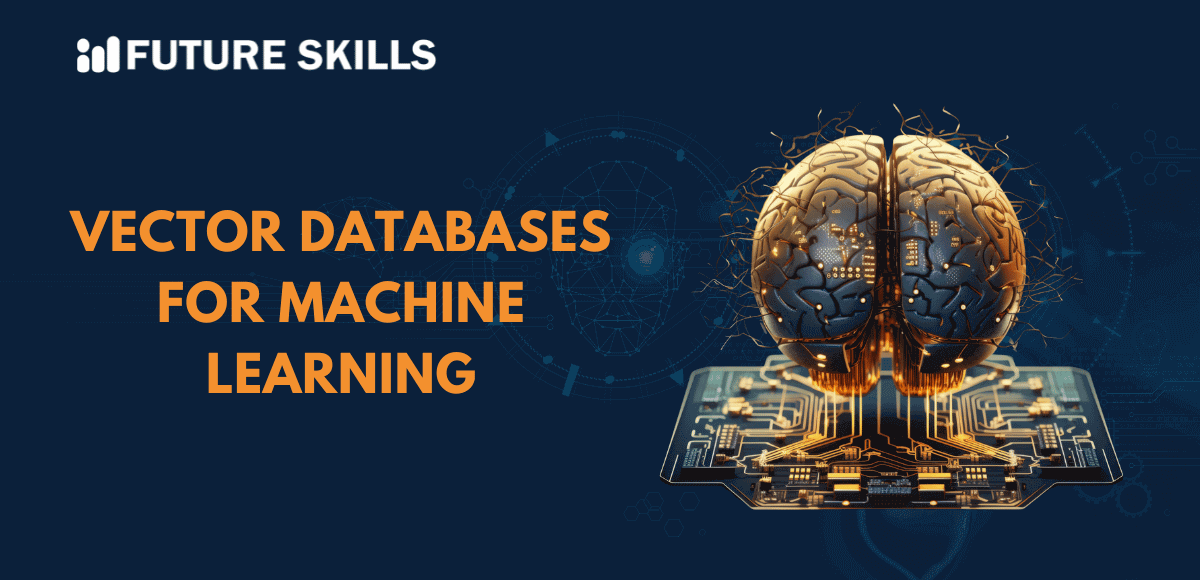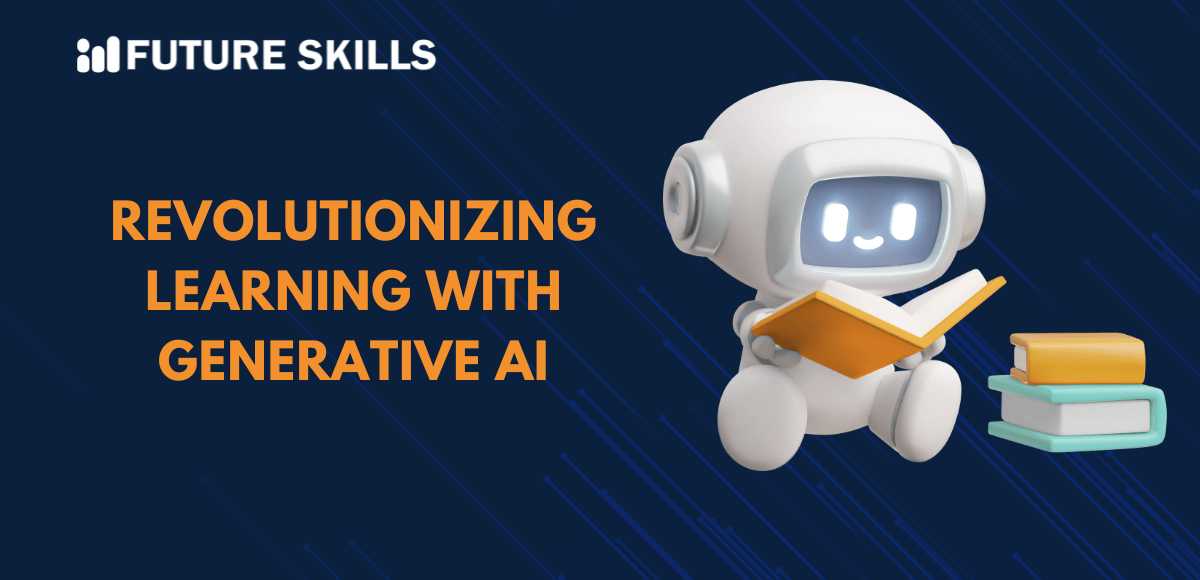Generative AI has showcased massive growth within a limited span of time. Interestingly, the rapid evolution of generative AI has also caught the attention of the global technological community. The most important factor that has been driving the generative AI revolution is a vector database. The use of vector databases for machine learning has transformed the conventional approaches used for managing complex data.
Vector databases are different from traditional relational databases as they have the features for managing and processing high-dimensional vector data. As a result, they are the perfect choices for AI and machine learning applications. The transition to advanced AI relies on the growth of vector databases as critical tools for achieving better accuracy and efficiency in management of the massive and intricate datasets of machine learning models. Let us learn more about vector databases and their significance in machine learning.
Our Certified AI Professional (CAIP)™ program will help you develop a successful career in AI and enhance your creativity, productivity, and overall performance. Enroll today!
What is a Vector Database?
Vector databases are customized systems tailored for efficiency and accuracy in storing and retrieving vector data. You might think about questions such as “What is vector data in machine learning?” after learning about vector databases. Vectors are a structured collection of numerical values arranged in a specific order.
The numerical values, or vector data, could represent feature attributes or spatial coordinates. Examples of vector data in machine learning and AI point at the use cases in which vectors serve as representation of object features. Vector databases are responsible for efficient storage and retrieval of feature vectors.
How is Vector Embedding Important for Vector Databases?
The simplest explanation for vector embedding suggests that it is the process of creating vector databases. The fundamental concepts of vector databases for machine learning would be incomplete without vector embedding. It involves representation of objects, such as sentences and words, in the form of vectors in continuous vector spaces.
Vector embedding is an effective technique for conversion of categorical and high-dimensional data into continuous and lower-dimensional vectors. The conversion helps in creating data that machine learning algorithms can understand more effectively.
Vector embedding is a popular concept in natural language processing tasks for representation of words, phrases or sentences. The primary goal of vector embedding focuses on capturing the semantic relationships between different objects. Word embeddings involve representation of similar words with vectors placed closer to each other in a vector space.
Therefore, the machine learning vector database interplay helps ML models in understanding semantic and contextual relationships between different words. You must also note that LLMs use vector embeddings for serving complex NLU and natural language generation tasks.
How Do LLMs Use Vector Embeddings?
The curiosity to learn about vector embeddings also draws attention towards the most popular examples, Large Language Models. You can find vectors in the architecture that powers the impressive feature set of ChatGPT. The model is capable of processing input data such as textual data through conversion into numerical vectors.
You can find more insights on “What is vector data in machine learning?” by unraveling how vectors work in ChatGPT. The vector data in ChatGPT helps in capturing semantic and contextual information in the input. It plays a crucial role in helping the model with in-depth understanding of the input data thereby enabling the generation of contextually relevant and accurate responses.
The transformer architecture used in ChatGPT leverages self-attention mechanisms for determining the weight of different words in a sentence. As a result, the model can become more capable of capturing context and important relationships. Self-attention is the capability of a machine learning model to allocate different levels of importance to various words in the input sequence.
In a way, ChatGPT represents one of the common vector database use cases for machine learning which enjoys mainstream popularity. The GPT-3.5 model works by using vector data of language objects to support different types of natural language generation and natural language understanding tasks. As a matter of fact, the use of vector databases makes the model a powerful pick for language-based applications.
Explore the world of ChatGPT and become a pro with our meticulously designed Certified ChatGPT Professional (CCGP)™ Certification. Learn how to use ChatGPT effectively and become an expert!
How are Vector Databases Different from Relational Databases?
You would find multiple architectural differences between vector databases and traditional databases, such as relational databases. At the same time, the line of difference between the two types of databases has been vanishing away with conventional databases such as PostgreSQL introducing add-ons such as PG Vector for vector data search.
The machine learning vector database relationship revolves around the specialized approach of vector databases for managing data classification and retrieval. Conventional databases have been tailored for managing scalar and discrete data types such as numbers and strings, by arranging them in columns and rows. Such a structure is useful for managing transactional data. However, it does not offer flexibility for dealing with high-dimensional and complex data used in machine learning and AI systems.
Vector databases have been tailored for storage and management of vector data, which are arrays of numbers representing different points within a multi-dimensional space. They are the ideal databases for machine learning with inherent capabilities for tasks that require similarity search. Vector databases can help in finding the closest data points within a high-dimensional vector space. In addition, vector databases also leverage indexing and search algorithms to ensure better efficiency in managing high-dimensional vector data.
Discover the Secret behind the Magic of Vector Databases
The simplest explanation for the working of vector databases comes from the understanding of vector embeddings. Vector databases work with the help of vector embeddings. The use of vector databases for machine learning involves management of high-dimensional vectors.
Vector databases can store vector data on multiple nodes with the help of partitioning or sharding techniques to improve scalability. Another crucial aspect in the working mechanism of vector databases is their ability for storing and indexing high-dimensional vector data. It helps in differentiating vector databases from conventional databases.
Indexing of vector data is a critical process in the working of vector databases as it helps in performing similarity searches with better efficiency. The indexing process depends on specialized structures tailored for Approximate Nearest Neighbor or ANN search. You can dive deeper into queries like “What is vector data in machine learning?” with insights on working of vector databases.
For example optimization of vector data for ANN search enables faster vector similarity search requests from the underlying design of the index structures. As a result, vector databases can have more metadata storage capabilities alongside the flexibility for managing and searching through huge datasets.
What are the Important Features of Vector Databases?
Vector databases can manage vector data and high-dimensional vectors in multidimensional vector spaces, thereby establishing a significant difference from relational databases. You can find more about vector database use cases for machine learning by reviewing the features of vector databases.
Vector databases have been optimized for storage and indexing of vector embeddings that help in machine learning. Interestingly, vector databases can accommodate any type of data including numerical data, sensor data and graph data. The optimization helps LLMs in efficient processing and retrieval of vectors alongside understanding complex information.
-
Managing Huge Loads of Vector Data
Vector databases are tailored to deal with large data volumes in a multidimensional space. They use data structures to help with similarity search and nearest neighbor search that support complex AI applications.
-
Importance of Similarity Search
One of the interesting things about using vector databases for machine learning is the fact that vector search is the same as similarity search. Vector search helps AI systems with precise identification of nearest neighbors in datasets by leveraging complex similarity metrics. Similarity search utilizes vector embeddings and can perform searches on large vector datasets. With the help of vector embeddings and different embedding models, vector databases offer better accuracy and relevance of the search results.
What are the Use Cases of Vector Databases in Different Industries?
Vector databases can contribute valuable enhancements to machine learning by improving generative AI and large language models. In addition, vector databases enhance semantic search and recommendations alongside retrieval-augmented generation models. You can find machine learning vector database use cases in different industries including finance, healthcare and retail. Vector databases can help in developing the foundations of fraud detection systems through analysis of transaction patterns for identification of potential fraud.
The uses of vector databases in healthcare can support improvements in medical imaging analysis, personalized medicine, genomic data processing and accurate diagnosis. The retail sector can use vector databases for empowering recommendation engines to provide personalized product suggestions to users. Vector databases also serve valuable use cases in the domain of manufacturing and social media.
Final Words
The review of vector databases proves that they are crucial requirements for the domain of machine learning. Vector databases are tailored specifically for housing vector data in a multidimensional vector space. The working of vector databases for machine learning depends on their capability to transform high-dimensional and categorical data into lower-dimensional and seamless vector data.
One of the best examples to understand the working of vector databases and vector embeddings involves LLMs such as ChatGPT. You can also find the applications of vector databases in various industries such as retail, social media, healthcare, and finance. Learn more about vector databases and their working mechanism right away.
Learn the complex concepts of AI and how AI is changing the landscape of almost every industry with our AI Certification Course. This course will help you become an AI professional.






